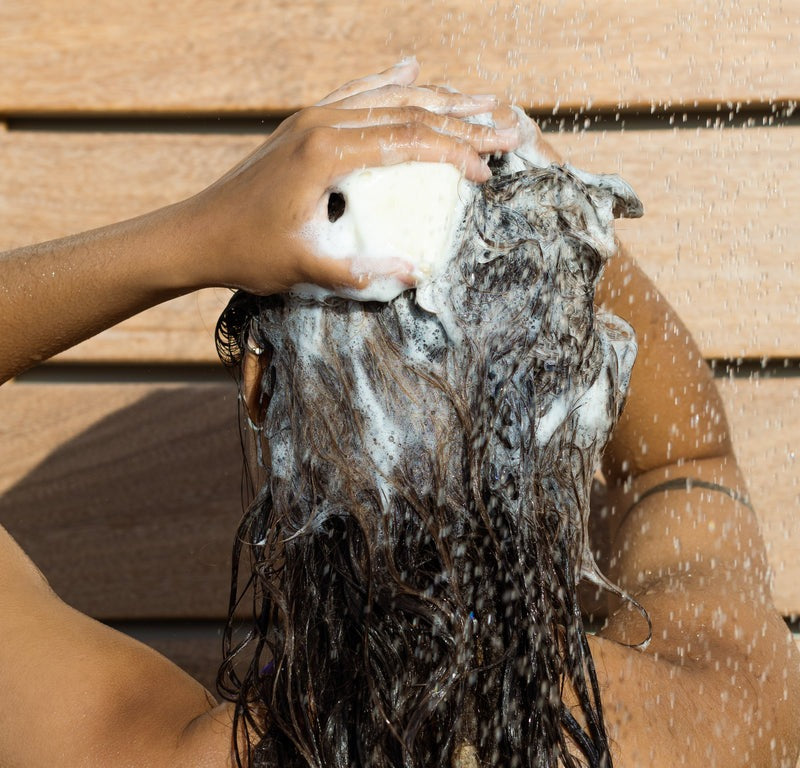
We've all been there... You desperately need a hair wash, your shampoo is basically nonexistent at this point, and that bar of soap seems to be staring right into your soul. You reach for the bar, telling yourself, "It won't hurt my hair, it’s only this one time".
No matter how much soap you rubbed onto your scalp in the pursuit of a refreshing cleanse, your hair is left feeling tacky, tangled, and lack-lustre for days on end, making you swear off bars forever.
Although both soap and shampoo can be found in bar form, it definitely does not mean that they share the same ingredients or offer the same properties. We have been conditioned to trust the marketing of liquid shampoo packaged in plastic bottles and body wash bar soap, but the idea of shampoo as a zero-waste bar is still a relatively new concept. So what makes them different?
The key difference is the pH of the product


While both are able to remove dirt and grim and wash away excess oil, the surfactants that allows each product to do the same job are very different. A shampoo bar has a significantly lower and more acidic pH of about 4.5-6.5 compared to your regular bar soap, which sits at a very alkaline pH between 8-10.
Each strand of hair has a protective cuticle layer composed of overlapping cells reminiscent of fish scales or tiles on a roof. Your hairs natural pH sits between 4.5-5.5, and if this delicate pH balance is disrupted by using products that push it into the alkaline side, the scales become flared and lifted causing your hair to become engorged, extremely tangled, and tacky feeling. Repeated use of soap to wash hair can result in permanent damage.
The pH of our shampoo bars closely mimic the natural pH of our hair and skin through the use of a coconut derived surfactant called sodium cocoyl isethionate. Comparatively, the surfactant in bar soap is created through the process of saponification; the reaction between sodium hydroxide and fatty acids found in oils. Saponification inherently requires a very high pH, so even if one were to add acidic buffers to try and bring the pH down, the result would be a failed product. Saponified soap will never ever be close to the pH of hair.
Most of us don’t have a litmus paper test with us when we go shopping for hair products (that would be weird?), so it’s important to look at the ingredients of any product marketed as a shampoo bar with a critical eye to make sure that you aren't just buying a bar of soap. Avoid any shampoo bar labelled with 'lye', 'sodium hydroxide', 'saponified [ingredient]', or 'sodium [ingredient]-ate'.
Additionally, you can also look to avoid any shampoo bars that instruct you to use apple cider vinegar after use. This is a vain attempt to neutralize a very alkaline soap product with a very acid rinse. The damage has already been done.
So to sum up, our biggest take away is to remember that not all "shampoo bars" are created equal, and shampoo bars that ARE formulated correctly, work the same (if not better) than the liquid alternative found in plastic bottles. Consider reading this blog as the nudge you needed to make the switch to a more eco-friendly alternative and green up your self care regime :)




Thankyou for the detailed and informative description of the difference between shampoo and soap. There is so much unscientific garbage out there on the internet that it took a while to find useful information. Now if you could please outline how a conditioner is built into a shampoo bar, and how it differs (if it does) from using separate shampoo and conditioner.
Thanks again.